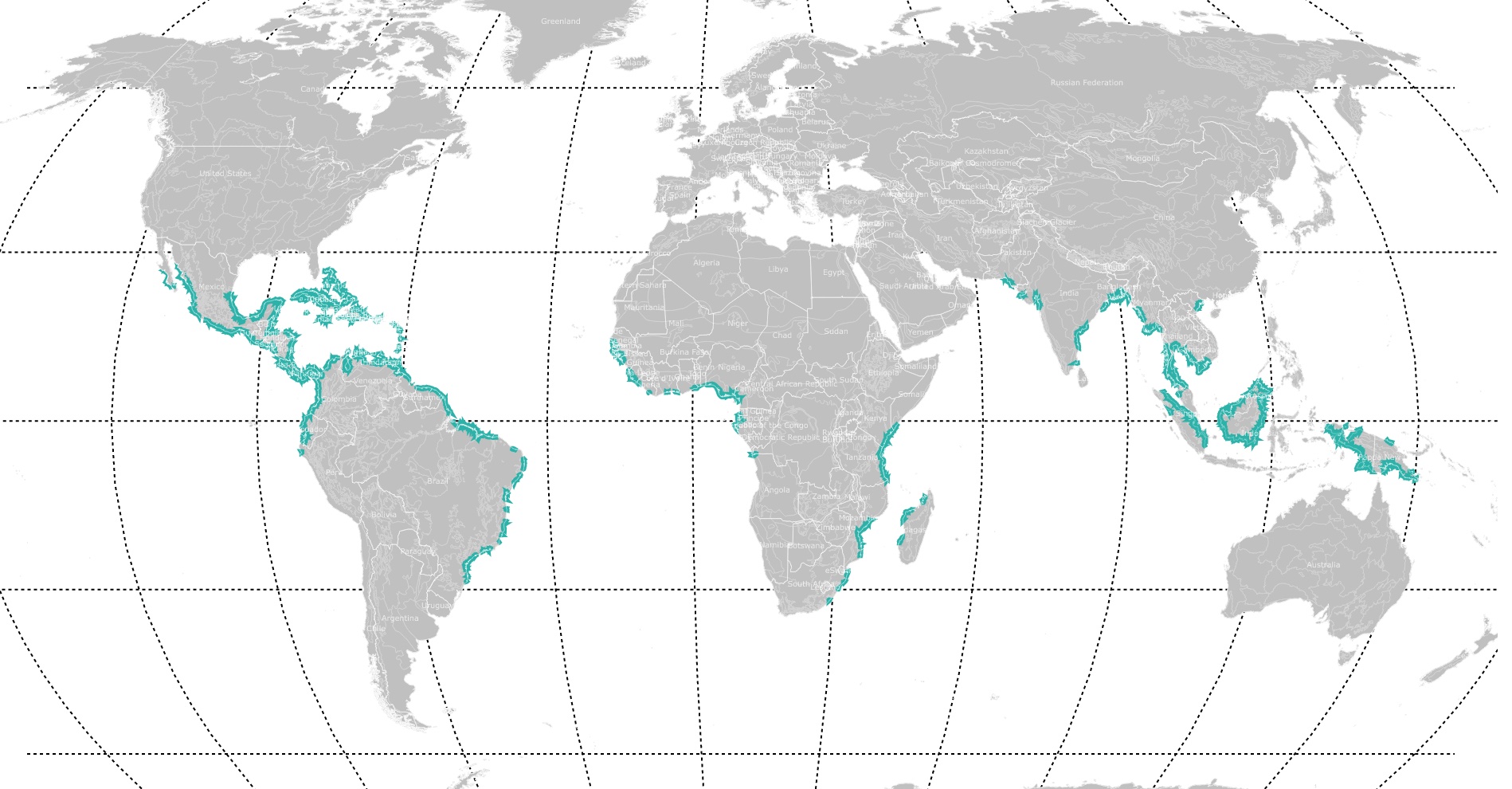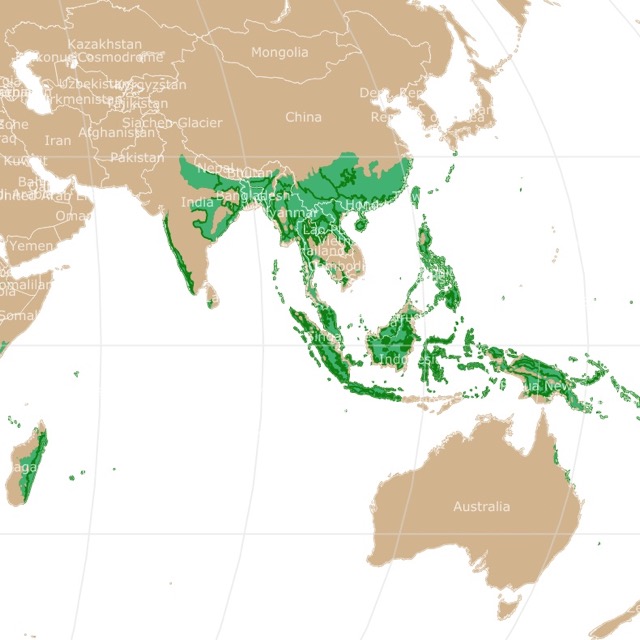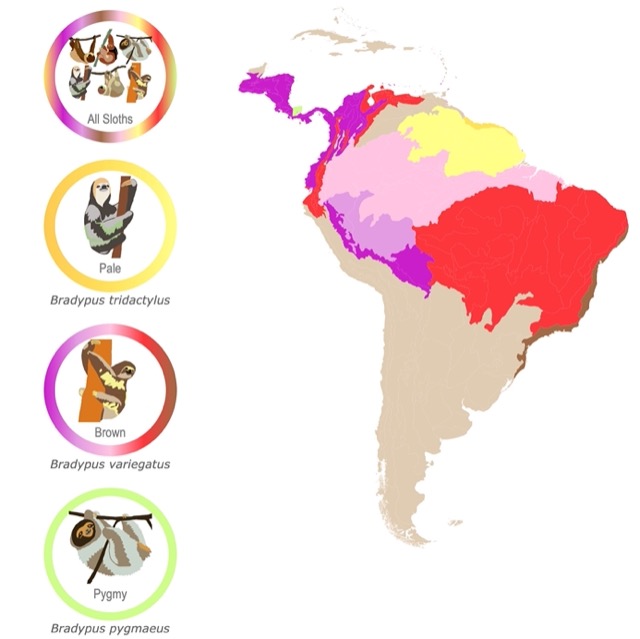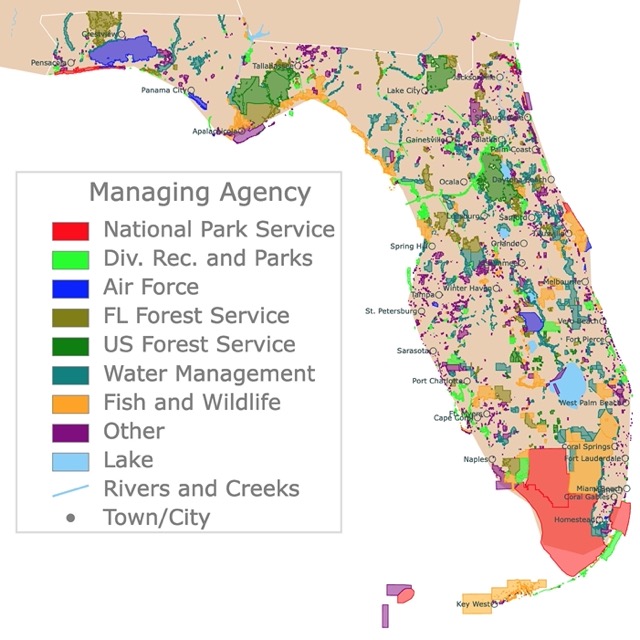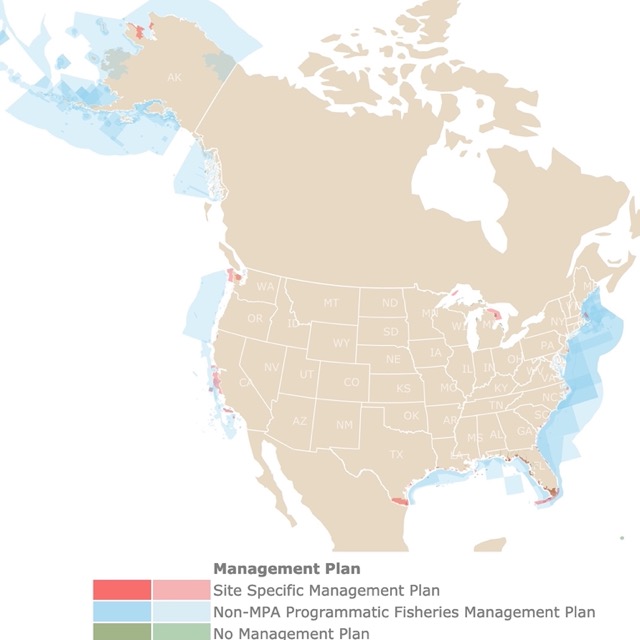Map of Mangrove Forests
This map shows mangrove forests around the world. It also shows the different biomes on land. To see their names and types, hover over the map. Zoom in the map to take a closer look! For more information scroll down.
Mangroves
Mangroves are a group of salt-tolerant plants that grow along tropical and subtropical coastlines. Their adaptations allow them to survive in saltier soils than other vascular plants cannot tolerate.
The term mangrove encompasses different habitats and plant species. Because of the ample meaning of the word, here are some clarifications.
True Mangroves
True Mangroves share adaptations that help them survive in soils saturated with water and salt. True mangroves may belong to very different plant species. It is estimated that 55 species of plants are true mangroves. NIH
Mangrove Associates are plants that can survive in salty soils but don't have the adaptations of true mangroves. These plants live close to true mangroves but usually further inland.
Mangrove Species
The folloing table includes the family and name of true mangrove plant species. Source: NCBI
| Family | Genus | Species | Common Name |
|---|---|---|---|
| Acanthaceae | Acanthus | Acanthus ilicifolius | |
| Pteridaceae | Acrostichum | Acrostichum aureum | |
| Plumbaginaceae | Aegialitis | Aegialitis annulata | Aegialitis rotundifolia |
| Primulaceae | Aegiceras | Aegiceras corniculatum | |
| Avicenniaceae | Avicennia | Avicennia alba | |
| Avicennia bicolor | |||
| Avicennia eucalyptifolia | |||
| Avicennia germinans | black mangrove | ||
| Avicennia integra | |||
| Avicennia lanata | |||
| Avicennia marina | grey mangrove | ||
| Avicennia officinalis | Indian mangrove | ||
| Avicennia rumphiana | |||
| Avicennia schaueriana | |||
| Rhizophoraceae | Bruguiera | Bruguiera cylindrica | |
| Bruguiera exaristata | rib-fruited mangrove | ||
| Bruguiera gymnorhiza | oriental mangrove | ||
| Bruguiera hainesii | |||
| Bruguiera parviflora | |||
| Bruguiera rhynchopetala | |||
| Bruguiera sexangula | upriver orange mangrove | ||
| Ceriops | Ceriops australis | yellow mangrove | |
| Ceriops decandra | |||
| Ceriops tagal | spurred mangrove | ||
| Kandelia | Kandelia candel | ||
| Kandelia obovata | |||
| Rhizophora | Rhizophora apiculata | ||
| Rhizophora harrisonii | |||
| Rhizophora lamarckii | |||
| Rhizophora mangle | red mangrove | ||
| Rhizophora mucronata | Asiatic mangrove | ||
| Rhizophora racemosa | |||
| Rhizophora samoensis | Samoan mangrove | ||
| Rhizophora stylosa | spotted mangrove | ||
| Lythraceae | Sonneratia | Sonneratia alba | |
| Sonneratia apetala | |||
| Sonneratia caseolaris | |||
| Sonneratia griffithii | |||
| Sonneratia gulngai | |||
| Sonneratia hainanensis | |||
| Sonneratia lanceolata | |||
| Sonneratia ovata | |||
| Meliaceae | Xylocarpus | Xylocarpus granatum | |
| Xylocarpus mekongensis | |||
| Xylocarpus moluccensis | |||
| Malvaceae | Camptostemon | Camptostemon schultzii | |
| Euphorbiaceae | Excoecaria | Excoecaria agallocha | |
| Combretaceae | Laguncularia | Laguncularia racemosa | white mangrove |
| Lumnitzera | Lumnitzera littorea | ||
| Lumnitzera racemosa | white-flowered black mangrove | ||
| Aracaceae | Nypa | Nypa fruticans | Mangrove palm |
| Myrtaceae | Osbornia | Osbornia octodonta | |
| Tetrameristaceae | Pelliciera | Pelliciera rhizophorae | |
| Rubiaceae | Scyphiphora | Scyphiphora hydrophylacea |
Mangrove Geographic Range
Mangroves grow around the globe in tropical and subtropical areas. Between the latitudes of 25 degrees north and 25 degreees south. Nevertheless, these latitudes depend on which area of the world they grow.
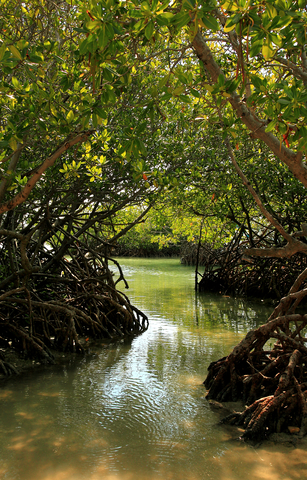
For example, Avicennia germinans common in Africa and the American continent, grows as far north as 32 degrees north in the Atlantic, while Avicennia marina grows also in Africa, all the way to Australia, and can survive all the way to 38 degrees south.
Temperature is a limiting factor to Mangrove distribution. These plants avoid cooler temperatures. Freezing temperatures will kill them. Smithsonian.
The area covered by Mangroves worldwide totals 57,915 miles 2 (150,000 km2), of which Southeast Asia covers the highest percentage at 33.5%, followed by South America covering 15.7%, North and Central America at 14.7%, and West and Central Africa 13.2%". Source: Mangrove Resources.
Mangroves are present in 123 countries around the world. Only 12 countries have two-thirds of all mangrove forests. Indonesia has 20% of the world mangroves. Source: Mangrove Classification
One of the most fascinating facts about mangroves is that as you move from west in the American Continent, to east in Australasia, the species richness of Mangroves increases steadily. The highest number of species is found close to New Guinea. This is believed to be the area where Mangroves originated and diversified. Global Ecology
Consequences of climate change like warmer temperatures and sea-level rise are expanding Mangroves' current geographic range into wetlands and salt marshes. These changes have expanded their distribution to Hawaii and Tahiti where they are not native and are considered invasive species.
Mangrove Environment
Mangroves are associations of salt-tolerant plants that grow in intertidal regions. They grow where seawater mixes with fresh water and sediment is accumulated in mud deposits. FAO
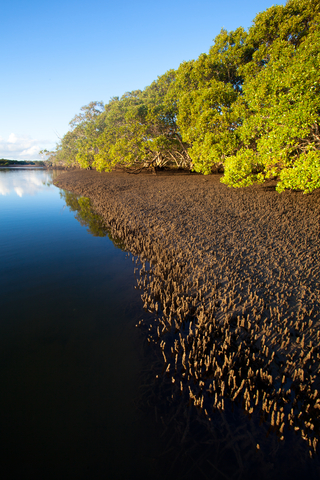
Mangrove wetlands are classified as:
- River Dominated
- Tide Dominated
- Wave Dominated
- Composite River and Wave Dominated
- Drowned Bedrock Valley Mangroves
- Mangroves in Carbonate Settings
The first five types are common in areas with land sediments. The last one is common in oceanic islands, coral reefs, and carbonate banks. These Carbonate Settings are common in the Maldives.
Mangrove Ecosystem
Mangrove Forests are some of the most productive and biologically diverse ecosystems on Earth.
Mangrove forests support a diverse food web that includes organisms that feed directly from its trees, like crabs and insects. Decomposing material nourishes fungi and bacteria.
Other organisms live on the structure created by Mangrove branches and tangled roots. This is especially true for fish that use mangroves as nurseries.
Some organisms that live in Mangrove forests include:
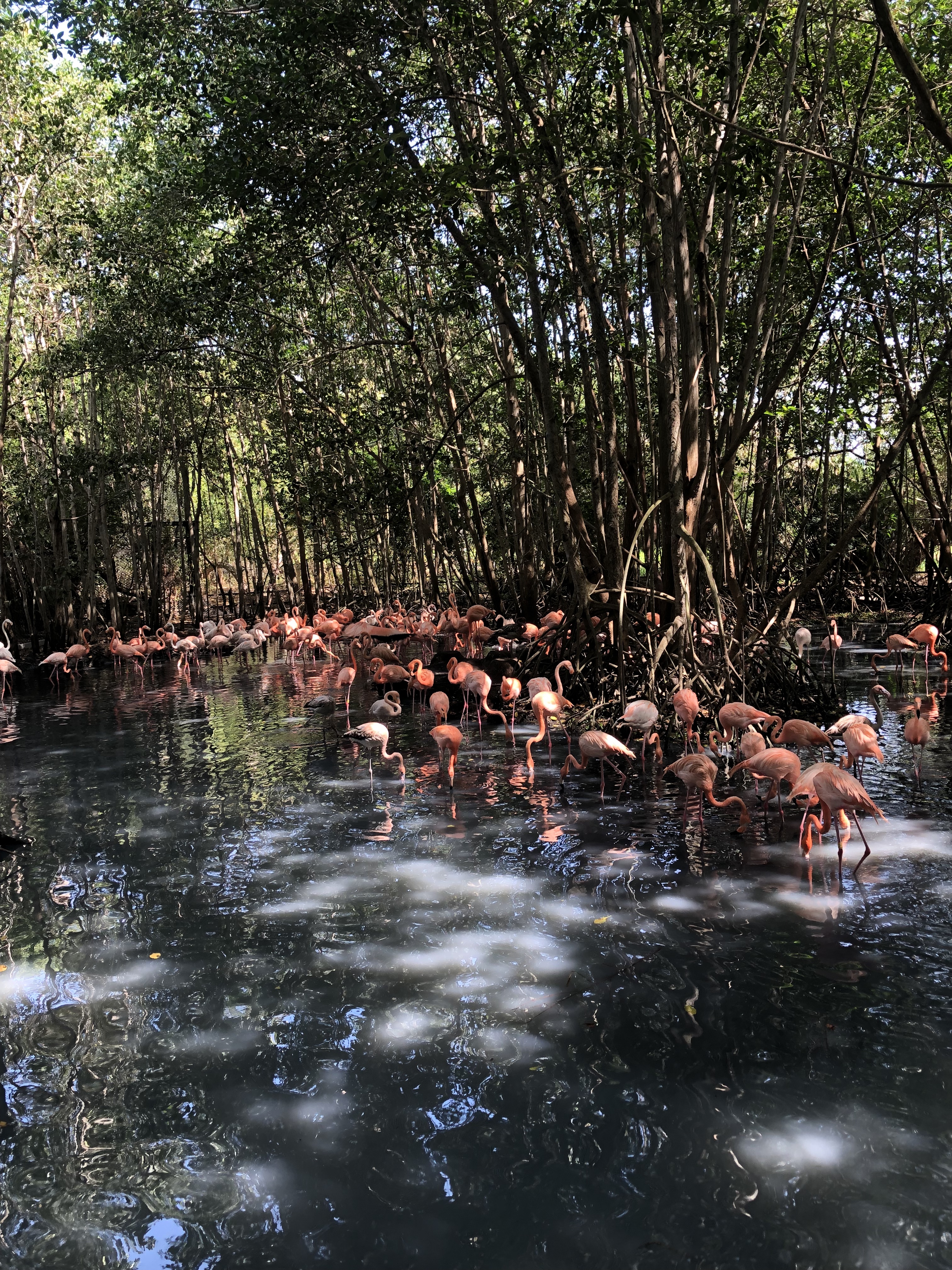
- Mammals: Tigers, sloths, raccoons, panthers, otters, bobcats, long-nosed monkeys, Cuscus, Dugong, lemurs, fishing cats, and more.
- Birds: Hoatzin, Roseate Spoonbill, Boat Billed Heron, pelicans, Mallard, Peregrine falcon, Barn Owl, Great egret, Flamingos, Limpkin, Blue Heron, and White Ibis.
- Reptiles: Anoles, Mangrove Water Snake, Eastern Indigo Snake, Alligators, Crocodiles, and more.
- Amphibians: different frog species.
- Fish: Mudskippers, Mangrove snapper, Jacks, Grunts, Rainbow parrotfish, goliath grouper.
- Invertebrates: Horseshoe crab, shrimp, crabs, and shellfish.
Mangrove Adaptations
Mangroves grow in intertidal locations with tides, strong waves, strong winds, plus soils that are anaerobic (no oxygen), acid, and high in salinity.
These special circumstances resulted in Mangrove trees' exceptional adaptations to cope with a harsh environment. All these adaptations converged in Mangroves, despite the diverse origin of these plants. Marine Diaries
Mangrove Roots
Plants release oxygen as part of photosynthesis, but they also respirate or release carbon dioxide. This is especially true at night and in growing tips of branches and roots.
Respiration is possible on leaves, but not on roots in muddy soils from intertidal tropical areas, which is usually anaerobic. This lack of oxygen would hinder respiration and root growth in regular plants.
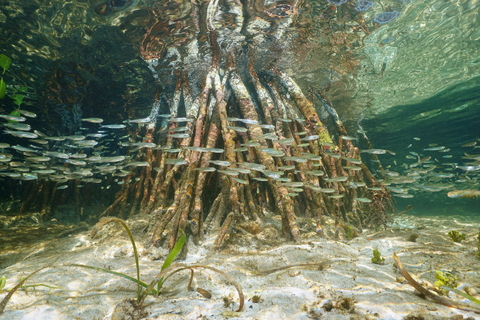
To overcome the lack of oxygen, mangroves have developed "aerial roots". These aerial roots are also called pneumatophores. These roots grow above the ground, and even over the water to absorb oxygen.
Aerial roots also help mangroves hold tight to the ground and resist the action of waves, storms, and hurricanes. This tight grip is also encouraged by the trees tangling their roots with other trees. This is especially true for the Rhizophora member trees.
In some species, the roots come out of the stems and branches, away from the main stem. This way, the tree grows and the roots stay in contact with the air.
Members of the Rhizophora group also use their roots to absorb water, but block the absorption of salt, avoiding its high concentrations.
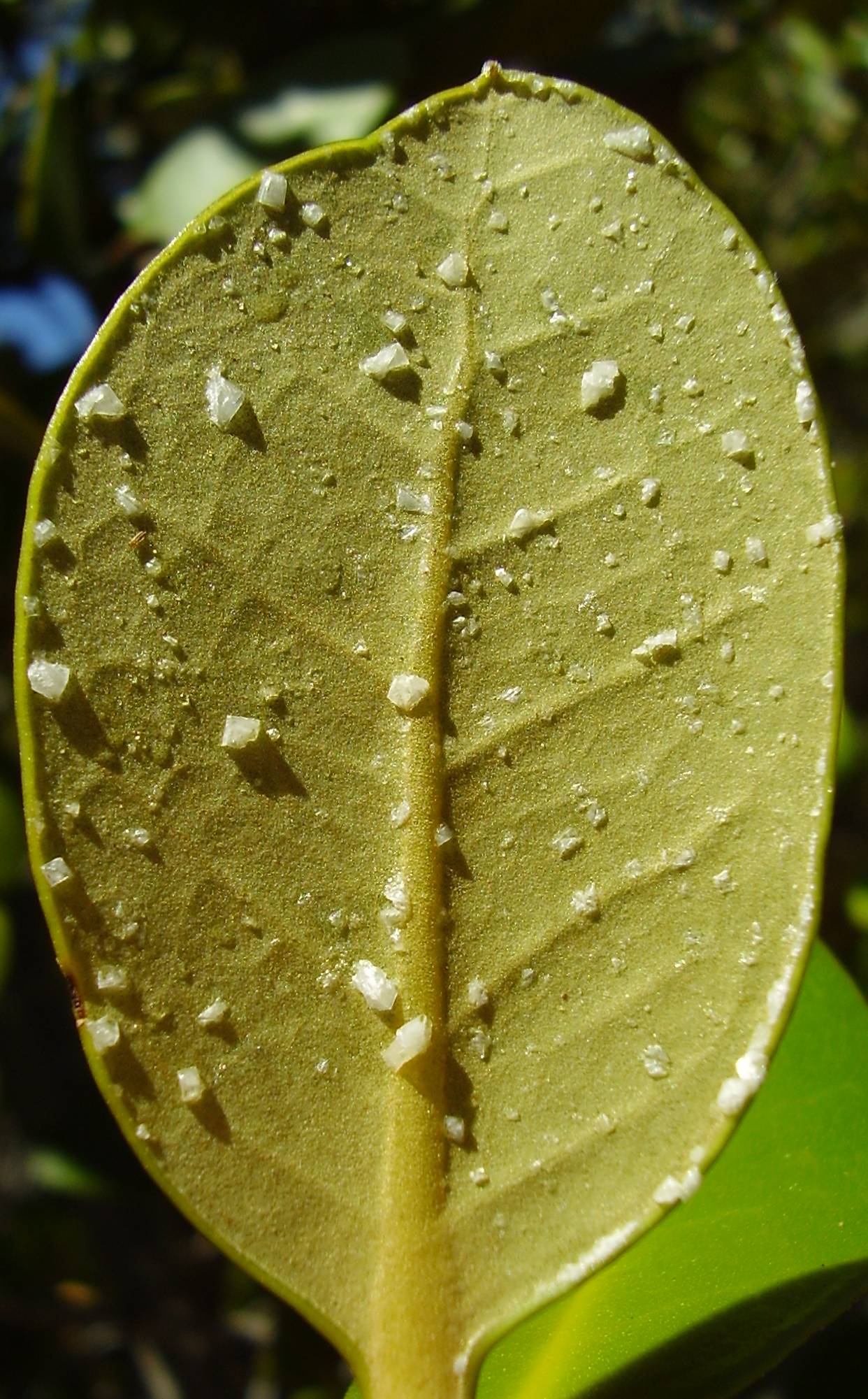
Mangrove Leaves
Mangrove trees do not just grow in areas with seawater salinity of 35ppt, but due to evaporation, they may grow in areas with salinity 3 to 5 times higher than seawater.
Species like Avicennia germinans and Laguncularia racemosa excrete salt from their leaves. This way they still absorb high salinity concentrated water but can keep just the water they need. It is possible to see the salt crystals on their leaves (See photo).
Salt excretion results in thick leaves that eventually fall off the tree. This adaptation is also effective to filter pollutants from the water! Sci Dev Net.
Mangrove Seeds

Mangroves are viviparous, or close enough. This is because mangrove seeds grow on the mother tree while still attached to its branches. These seeds eventually fall off as propagules that will drift in the water until they find a place to take root.
Why are Mangroves Important?
Mangroves are a link between terrestrial and aquatic ecosystems.
They protect coastlines from erosion and natural events like hurricanes, and waves.
They provide timber, tannins, honey, and medicine.
Mangroves act as carbon sinks as they incorporate Dissolved and Particulate Organic Carbon.
Mangroves absorb chemicals and heavy metals, therefore they help restore aquatic ecosystems.
Resources for Mangrove Forest Map
The shapefiles to create the map with ecoregions of the world were obtained from WWF. The shapefiles with the countries of the world were obtained from Natural Earth.
This map will be updated with new data! To receive updates on this and more nature maps join my email list!!!!!!!
Made by Luz K. Molina with D3.js.
